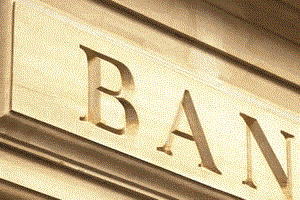Investor Pattern Recognition Counterattack
| Symbol |
Recognition |
Counterattack In A Nutshell
To look for the setup, you will need a trend in either direction with at least two ending candles as followed. The first candle needs to still be in that trend with a large body. The second candle will indicate a gap and then a long body in the opposite direction.
Candlestick patterns a useful way to find trends and potential movements within a market. The counterattack candlestick pattern is very useful because it can be used in both a bear and bull market.
Closer Look at Counterattack
Let us break this down into bears and bulls, starting with the bears. In a bear market, a counter attack will occur when on the first period candle has a large body following the bearish trend. The second candlestick will then have a gap and large body to this upside, closing near the close of the previous candle. This can indicate that the shorts lost control due to profit taking or similar items. Another indication could be the chart has hit support and this is where buyers feel the equity is cheap enough to purchase again.
Now, if we take it to the bulls side of the equation, it is the same thing except flipped. Meaning we need to see a defined bullish trend with the first candle being a bullish candle. The second needs to have a gap up with a long body to the down side with a close near the close of the previous candle.
It is important to note volume when this is occurring because when the counter attack beings, if there is higher volume than the previous candle, that could indicate the opposite trend really took control and may be pushing the stock back lower. Just like all patterns, these are not one hundred percent accurate and should be used as a trigger to take a closer look at the chart or company. The counterattack is useful pattern and will hopefully bring an edge to your trading or investing.
Investor Education Technical Analysis Modules
Most technical analysis of Investor Education help investors determine whether a current trend will continue and, if not, when it will shift. We provide a combination of tools to recognize potential entry and exit points for Investor from various momentum indicators to cycle indicators. When you analyze Investor charts, please remember that the event formation may indicate an entry point for a short seller, and look at other indicators across different periods to confirm that a breakdown or reversion is likely to occur.| Cycle Indicators | ||
| Math Operators | ||
| Math Transform | ||
| Momentum Indicators | ||
| Overlap Studies | ||
| Pattern Recognition | ||
| Price Transform | ||
| Statistic Functions | ||
| Volatility Indicators | ||
| Volume Indicators |
Trending Themes
If you are a self-driven investor, you will appreciate our idea-generating investing themes. Our themes help you align your investments inspirations with your core values and are essential building blocks of your portfolios. A typical investing theme is an unweighted collection of up to 20 funds, stocks, ETFs, or cryptocurrencies that are programmatically selected from a pull of equities with common characteristics such as industry and growth potential, volatility, or market segment. | Macroaxis Index Sold over 400 shares | |
 | Electronic Equipment Invested over 90 shares | |
 | Utilities Invested over 90 shares | |
 | Communication Services Invested over 90 shares | |
 | Data Storage Invested over 90 shares | |
 | Aircraft Invested over 90 shares | |
 | Momentum Invested over 60 shares | |
 | Banking Invested over 30 shares |
Other Consideration for investing
| Latest Portfolios Quick portfolio dashboard that showcases your latest portfolios | |
| Pattern Recognition Use different Pattern Recognition models to time the market across multiple global exchanges | |
| Sectors List of equity sectors categorizing publicly traded companies based on their primary business activities | |
| Financial Widgets Easily integrated Macroaxis content with over 30 different plug-and-play financial widgets | |
| Instant Ratings Determine any equity ratings based on digital recommendations. Macroaxis instant equity ratings are based on combination of fundamental analysis and risk-adjusted market performance | |
| Idea Analyzer Analyze all characteristics, volatility and risk-adjusted return of Macroaxis ideas | |
| Technical Analysis Check basic technical indicators and analysis based on most latest market data | |
| Fundamentals Comparison Compare fundamentals across multiple equities to find investing opportunities | |
| Portfolio Volatility Check portfolio volatility and analyze historical return density to properly model market risk |